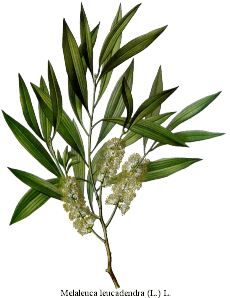My advise is to get a larger bottle of Tea Tree Oil and test it out yourself for a month or two and see how it works out. From my experience I have found it to work great for my skin and use a Body Shop brand tea tree oil soap every day. Here is a list of the information and uses for you to try out.
 Tea tree oil (Melaleuca alternifolia) is a multi-purpose herb that traces its roots to the Aboriginal people of Australia. For thousands of years, they used the leaves as an antiseptic and antifungal by crushing the leaves and making a mudpack. The Australian government considered tea tree oil a World War II essential for their armed forces' first aid kits. After the war, increased use of pharmaceutical antibiotics decreased tea tree oil's appeal everywhere except in Australia. Tea tree oil started to regain its popularity in 1960, with a recharge in its research around the world. Today, Melaleuca alternifolia is also grown in California.
Tea tree oil (Melaleuca alternifolia) is a multi-purpose herb that traces its roots to the Aboriginal people of Australia. For thousands of years, they used the leaves as an antiseptic and antifungal by crushing the leaves and making a mudpack. The Australian government considered tea tree oil a World War II essential for their armed forces' first aid kits. After the war, increased use of pharmaceutical antibiotics decreased tea tree oil's appeal everywhere except in Australia. Tea tree oil started to regain its popularity in 1960, with a recharge in its research around the world. Today, Melaleuca alternifolia is also grown in California.
Properties of tea tree oil
Tea tree oil's properties are contained in the oils of its leaves. The oil is steam distilled from the leaves and then tested for chemical properties, which can number between 50 and 100. This may explain tea tree oil's many beneficial uses. The main active components are terpinen-4-ol, 1,8-cineole, gamma-terpinene, p-cymene and other turpenes. Its aroma is distinct and very floral although sharp.
General use
Tea tree has a long history of traditional use. Australian aboriginals used tea tree leaves for healing skin cuts and infections, by crushing the leaves and applying them to the affected area. The oil contains constituents called terpenoids, which kill fungus and bacteria.
Acne - Some research in humans suggests that applying tea tree oil to acne lesions on the skin may help acne to clear up faster and may also cause fewer adverse effects (skin dryness, itching, stinging, or redness) than do other commonly prescribed acne drugs..
Infections - Tea tree oil has been studied for treating a variety of infections. Early studies have found that tea tree oil may kill toenail fungus, fungal infections in the mouth and skin, athlete’s foot, some bacterial infections, vaginal infections, and herpes infections. However, there are no clear answers in these areas because studies have been small and low quality. More research is needed before a recommendation can be made.
Gingivitus - Early study suggests that tea tree oil may help gum inflammation and reduce plaque when used in mouthwash. Further research is needed to confirm these results.
Other uses
- Athlete's foot
- Minor injuries
- Vaginitis
- Thrush
- As an antiseptic
- Boils
- Lice
- Psoriasis
- Yeast infection
Antibacterial
The most promising new function of tea tree oil is to counter methicillin-resistant Staphylococcus aureus (MRSA), also called the hospital super bug. In United States and European hospitals, MRSA grew from under 3% in the 1980s to 40% in the late 1990s. This super bug attacks people who have wounds, such as post-operative infections , and a depressed immune system. MRSA resists conventional antibiotics, except Vancomycin. A Thursday Plantation in vitro study, at East London University, comparing Vancomycin and tea tree oil, shows the latter as a powerful alternative. This study corroborated the University of Western Australia study by Thomas Riley and Christine Carson. Because the spread of MRSA occurs mainly by hands, one London hospital uses tea tree oil soap for staff and patient hygiene. The first study using real patients with MRSA, is currently in progress at The John Hunter Hospital, Newcastle New South Wales. The undertaking looks at tea tree oil as a topical alternative.
Tea tree oil works as an expectorant when inhaled or taken internally and has a soothing effect; therefore, it can be used for throat and chest infections, and clearing up mucus. It is also effective against earaches, cystitis, and gingivitis. Inhaling steaming hot water with 5 drops of tea tree essential oil added can not only soothe coughing and plugged noses, but doing so at the start of the infection might stop it from spreading. For sore throats, gargle with 6 drops of tea tree oil in a glass of warm water.
Common Doses
Tea tree comes in cream, ointment, lotion, and soap forms It can also be found as a pure oil. Tea tree oil has been used as a spot treatment for acne, for fungal infections of the toenails, and diluted as a mouthwash for oral yeast (thrush). When gargling, the solution is never swallowed after use
Recipes - Steam Inhalations
2 drops of tea tree oil in a bowl of steaming water. Cover head an
No comments:
Post a Comment